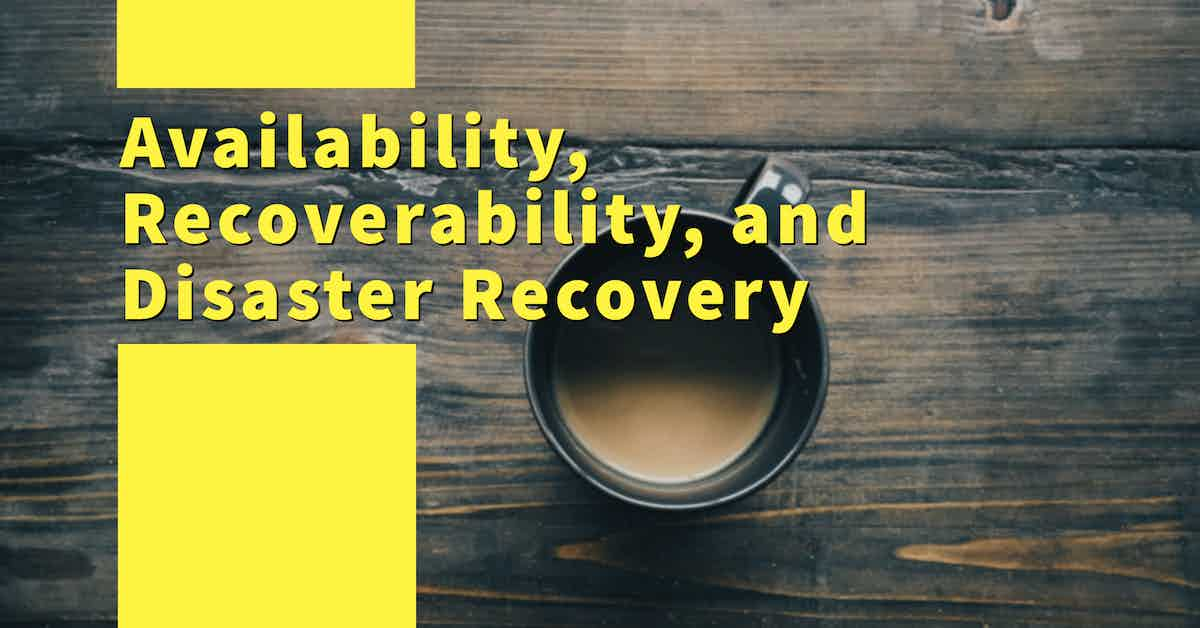In the realm of software engineering, ensuring that your applications run smoothly and reliably is of paramount importance. To achieve this, you need to have a clear understanding of concepts like availability, recoverability, and disaster recovery. While these terms are often used interchangeably, they represent distinct aspects of maintaining system uptime and data integrity. In this blog, we’ll explore the key differences between availability, recoverability, and disaster recovery, shedding light on how each contributes to a robust software ecosystem.
Understanding Availability
Availability, in the context of software systems, refers to the extent to which a system is accessible and operational over time. [1] It measures the system’s ability to remain functional and responsive to users, ensuring that services are available when needed. Availability is typically expressed as a percentage, with 100% availability indicating uninterrupted operation.
Uptime Metrics
The primary focus of availability is on uptime metrics, such as “99.9% uptime.” This metric means that the system is expected to be accessible for 99.9% of the time, which translates to about 8 hours and 45 minutes of downtime in a year.
High Availability (HA)
Achieving high availability involves minimizing downtime through redundancy and fail-over mechanisms. For instance, using load balancers to distribute traffic across multiple servers can ensure continuous service, even if one server fails. [2]
Redundancy
Redundancy is a key strategy for availability. This entails having backup systems or components that can seamlessly take over in case of a failure. Redundancy can be applied to hardware, software, and even data centers.
Understanding Recoverability
Recoverability is another critical concept in software engineering. It focuses on the ability to restore a system to a known and operational state after a failure. This involves processes, strategies, and mechanisms to ensure that, when a disruption occurs, the system can recover with minimal data loss and downtime.
Backups
Central to recoverability is the regular creation and maintenance of backups. Backups serve as snapshots of the system’s state at different points in time, allowing you to revert to a previous state in case of data corruption, errors, or disasters.
Rollback and Roll-forward
Recoverability also involves the ability to rollback to a stable state or roll-forward to a newer state, depending on the nature of the failure. This flexibility is crucial for ensuring data consistency and integrity.
Point-in-Time Recovery
Point-in-time recovery is a feature that enables you to restore data to a specific moment in time, ensuring that data remains consistent, even in the face of data corruption or user errors.
Understanding Disaster Recovery
Disaster recovery goes beyond simple recoverability. It is a comprehensive strategy and set of processes designed to handle catastrophic events, such as natural disasters, data breaches, or infrastructure failures, which can potentially result in the loss of an entire data center or significant portions of data.
Geographical Redundancy
Disaster recovery typically involves geographical redundancy, where data, applications, and services are replicated in multiple data centers located in different geographic regions. As a result, this minimizes the risk of losing all data due to a localized disaster.
Data Replication
Data replication is crucial in disaster recovery to ensure that data is synchronized across different locations. This means that if one data center becomes unavailable, another one can take over seamlessly.
Fail-over Procedures
Disaster recovery plans include well-defined fail-over procedures that specify how to switch from the primary data center to the secondary one in case of a disaster. These procedures aim to minimize downtime and data loss. [3]
Distinguishing the Differences
Now that we’ve explored availability, recoverability, and disaster recovery, let’s summarize their key differences:
- Availability ensures that a system remains operational and responsive, often expressed as a percentage of uptime.
- Recoverability focuses on restoring a system to a known state after a failure, involving backups, rollback/roll-forward mechanisms, and point-in-time recovery.
- Disaster recovery is a comprehensive strategy to handle catastrophic events, emphasizing geographical redundancy, data replication, and fail-over procedures to minimize data loss and downtime.
Conclusion
For software engineers, understanding the differences between availability, recoverability, and disaster recovery is essential for building resilient and reliable software systems. Availability ensures that your system is up and running most of the time, while recoverability ensures you can restore your system to a known state after minor failures. Disaster recovery, on the other hand, provides a safety net against catastrophic events.
To create robust software systems, it’s vital to incorporate elements of all three concepts into your design and operational practices. Balancing these aspects will help you maintain user satisfaction, data integrity, and system reliability, even in the face of unexpected challenges. Furthermore, remember that availability, recoverability, and disaster recovery are not interchangeable terms; they each play unique and critical roles in the software engineering landscape.





